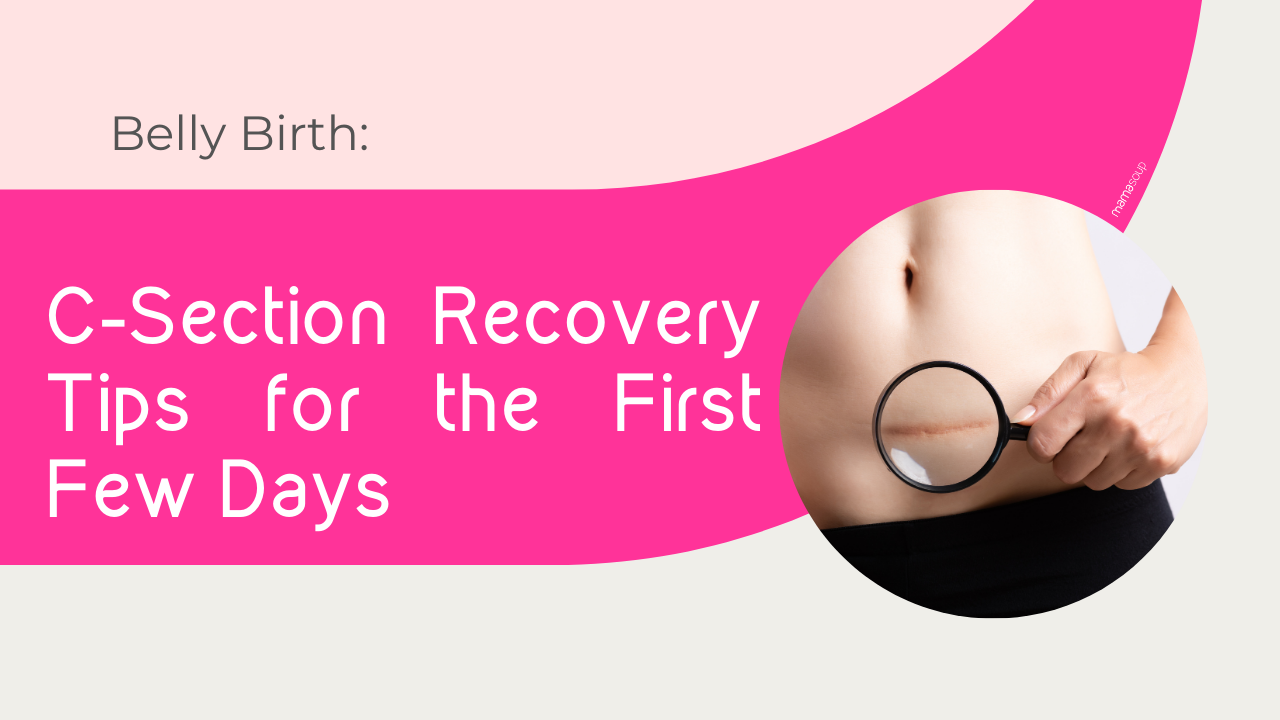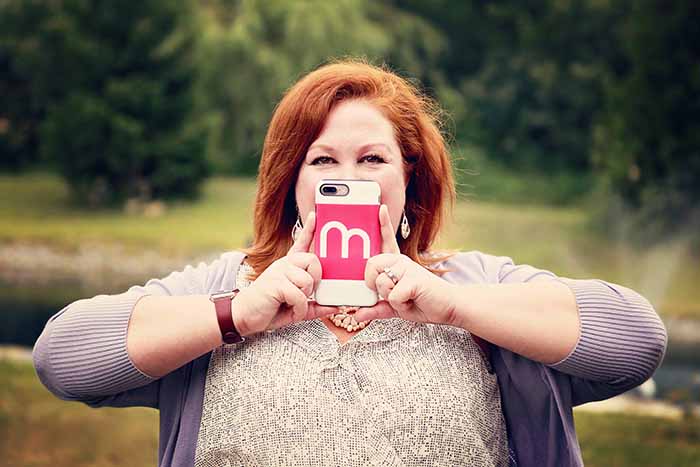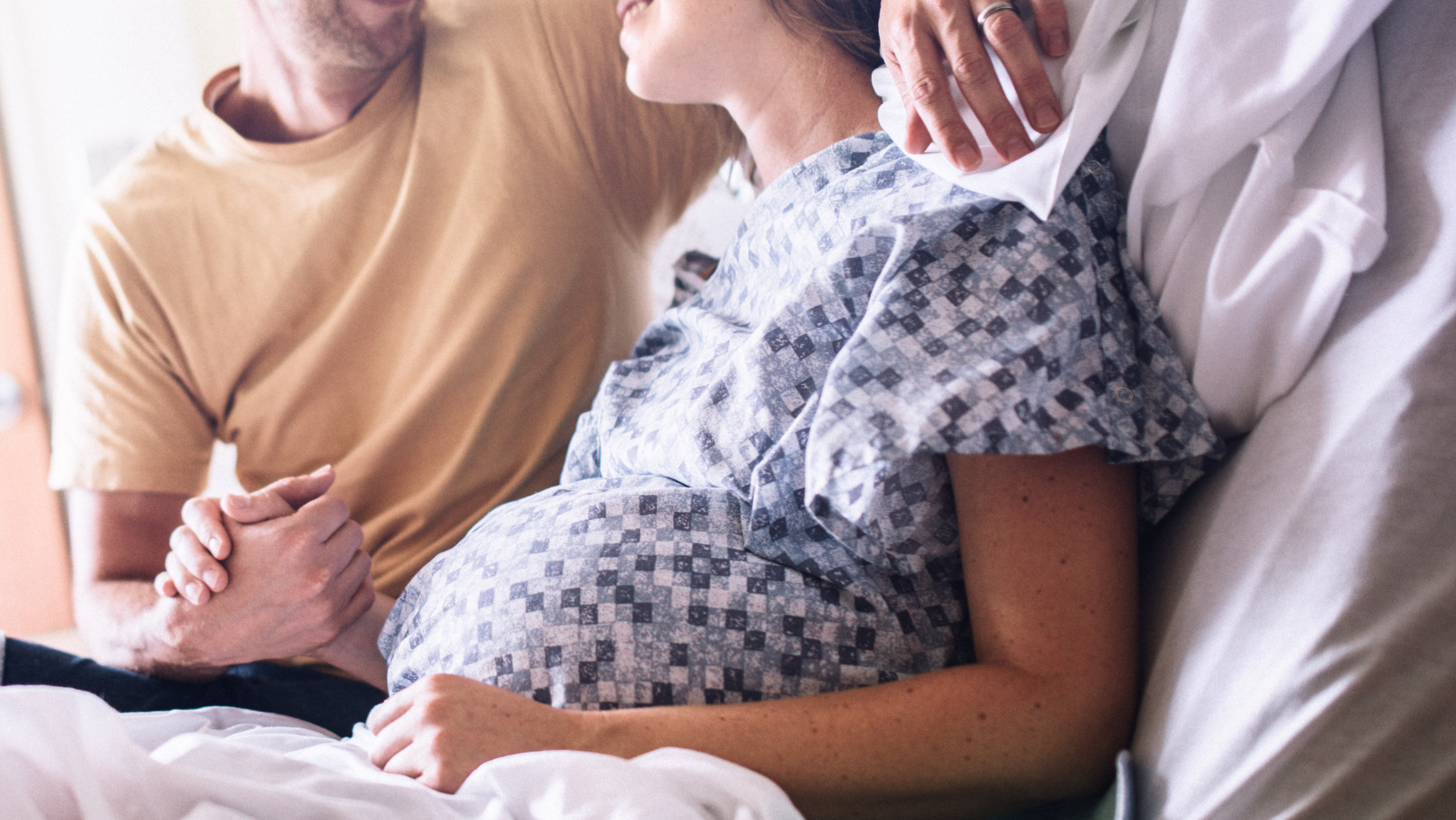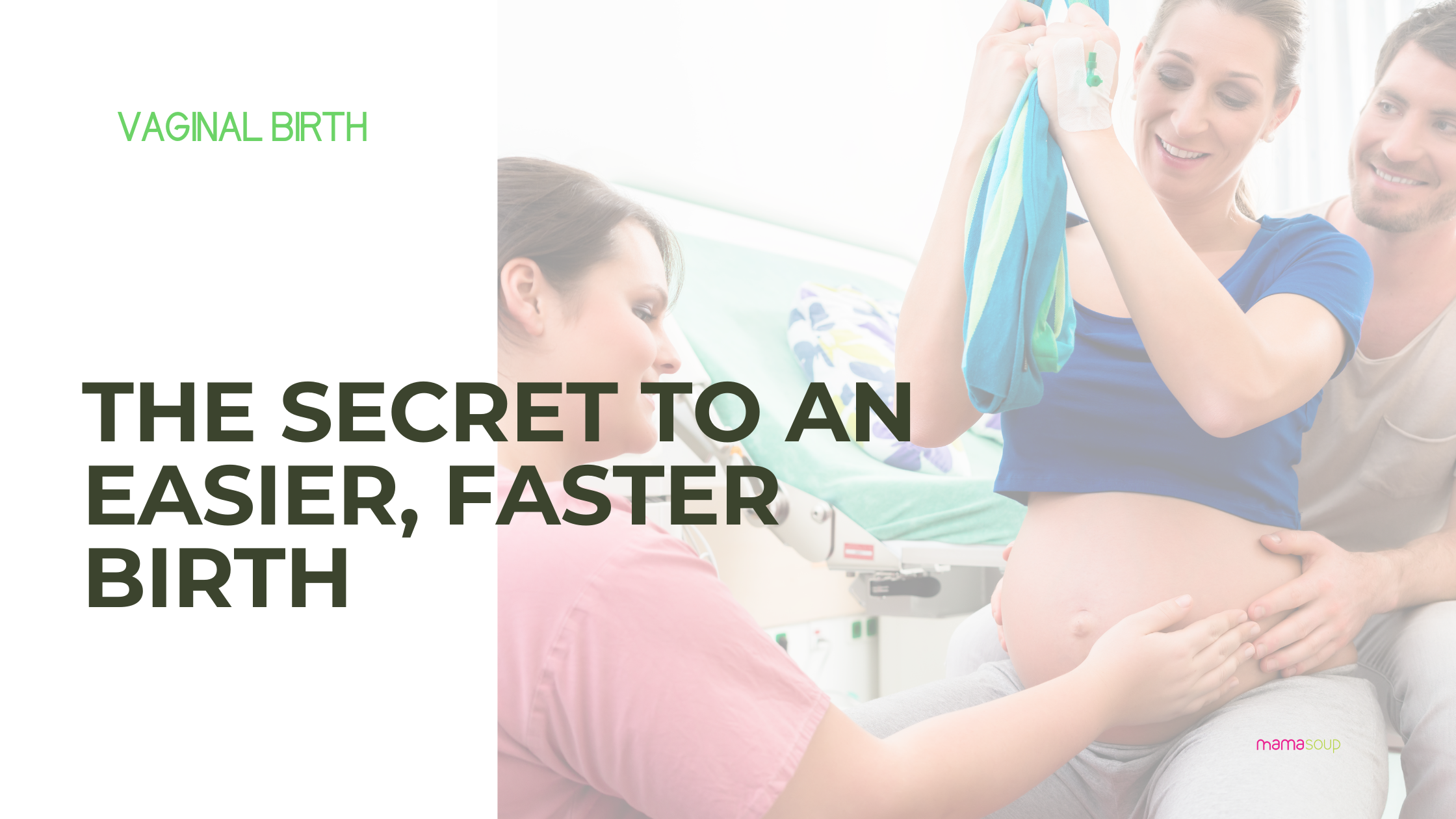C-Section Recovery Tips for the First Few Days
Having a c-section isn’t the easy way out of birth. In fact, it’s the harder way to have a baby. I have about 20 years serving women as they become moms and I’ve never yet seen a woman breeze through a caesarean.
I remember my first c-section after having 2 vaginal births. Even as a nurse I felt scared about my recovery. I mean, 2 kids and a newborn is terrifying enough, but doing it while recovering from major surgery? I’ll admit it- I didn’t handle things that well. I dealt with breastfeeding issues and a post-op infection. I was pretty stressed because my pain wasn’t controlled at all. I wish that somebody had given me some practical tips for my recovery like I’m about to give you.
If you’re facing a caesarean birth (and let’s be honest here- about 30% of pregnant women will end up having one) you probably have some questions: about pain control, breastfeeding, postpartum bleeding and care of your incision. I know I did!
PAIN MANAGEMENT
Before you head home from the hospital, your doctor will probably give you a prescription for narcotics. Even if your pain is well controlled when you leave the hospital, fill that prescription and take it home with you. You just may need it, and when you do you won’t want to wait for someone to go all the way to the drugstore to get it.
Try to use Ibuprofen and Acetaminophen as your first resource for pain. Make sure you're taking the full dose of Ibuprofen every 6-8 hours and the full dose of Acetaminophen every 4-6 hours. This should keep you fairly well covered, especially if you rate your pain at a 5/10 or less.
Narcotics make you and the baby sleepy so if you’re having troubles with breastfeeding, try to avoid them. HOWEVER- if you're having pain, take them.
TIP: Try to take them right after you breastfeed so the baby won’t sleep through the next feeding.
If you’re still regularly relying on narcotics when you go home, make sure you have someone there to help you with the baby at all times. Narcotics are no joke and they can make you sleepy so you’re going to need some help.
It’s going to hurt when you go from a laying to a sitting position. Ask for help when you need to get out of bed. Use a rolled-up towel or baby blanket to brace your incision before you get up!
INCISION CARE
When it’s time for the super-sticky dressing to come off, ask if you can have a shower and take it off while it’s all wet. This is especially useful if your incision bled under the dressing.
Your incision either has stitches (most likely dissolvable), staples or skin glue. If you have staples, take some pain medication about half an hour before they’re removed. It doesn’t usually hurt that much, but once in awhile it may pinch a little. You may have little tape strips across your incision called, “steri-strips”. These just provide extra reinforcement and you shouldn’t pick at them. They’ll fall off on their own in about a week.
Take a really good look at your incision before you leave the hospital. Ask your nurse to do it with you so she can answer any questions you may have. It may look a little scary, but it’s really important to know how it looks when it’s healing properly. Some redness and swelling is normal at this point. When you go home, you’re going to wash your hands and use a mirror to look at it every day to make sure it is healing. It should not look redder than it does the day you left the hospital, it shouldn’t ooze or smell foul and it shouldn’t open up or bleed.
TIP: If any of the above occur (or if you run a fever) go and see your doctor for a same-day appointment.
From one mama to another: you just had a baby. So please don’t be upset if you have to lift your tummy out of the way to see your incision. This is NORMAL. It took 9 months to grow that belly and it’s going to take some time for it to go back down. Also, the incision may look really big and gross to you right now, but it’s going to shrink and become more flesh-coloured.
Once your incision is healing well, ask your doctor about using Vitamin E or coconut oil directly on it, to help speed up the process and reduce scar tissue.
PRO TIP: After showering, gently pat your incision dry with a clean towel and turn your hair dryer on the COOL heat setting. Now, instead of doing your hair, lift your belly out of the way and fully dry your incision. This will help prevent the growth of bacteria and fungus. Hey, you’re a mom now. This is the good stuff.
VAGINAL BLEEDING
The good news is that women who have a caesarean birth typically have less bleeding than a woman who has a vaginal birth. But bleeding in postpartum is as individual as the woman who experiences it. Here’s how bleeding after having a baby usually goes:
- Bright red, to brownish, to whitish to clear.
- Some women bleed for a couple of weeks, some for 8 weeks
- Some women pass clots. Clots aren’t always a sign of trouble; lots of women have them in the first few days after having a baby. If you've been laying down for a long time and then you get up to go to the bathroom, you may notice more clots. It’s usually just from the blood pooling in the vagina.
- *If you experience heavy bleeding of any kind after leaving the hospital, go to Emergency. Women can have a postpartum haemorrhage anytime in the first few weeks after giving birth.
- What’s “heavy bleeding”? You should never soak a pad in less than an hour, at any time after the first 12 hours of giving birth.
- If your bleeding has turned brownish and then suddenly turns bright red again, put your feet up. You’ve probably overdone it.
(RELATED: 🎯 Stages of Postpartum Bleeding)
PRO TIP: Make sure you empty your bladder often so your uterus has lots of room to contract. If your bladder is full, it gets in the way of the uterus contracting. If the uterus isn’t contracting, you experience heavier bleeding and you can hemorrhage.
GAS PAIN
My biggest hope for you is that you pass gas and poop easily, Girl.
It's pretty common to have gas after abdominal surgery. Gas pain only gets worse if it’s not dealt with. If you have severe pain before you’re discharged from the hospital, I suggest doing everything to try and let it go before you go home. You can:
- Walk, walk, walk
- Chew gum
- Drink more peppermint tea
- Have a looooong shower and allow the warm water to hit your belly while you rock your hips back and forth
- Walk, walk, walk
- Ask for Milk of Magnesia or anything to help get your bowels moving
- Try changing your position a lot
- Don’t be shy- let it rip!
Unfortunately if none of the above work, you may need to have a rectal tube put in place to drain the air out (a tube placed in your rectum). The process kind of sucks, but the result is worth it if you’re having a lot of gas pain.
BREASTS
Whether you decide to breastfeed or not, your breasts are going to go through some big changes after birth. If you aren’t breastfeeding, you’ll have to deal with the discomfort of engorgement (hard, painful, swollen breasts). Check out this post to help make your experience a little more pleasant by using cabbage. Wait-what?? Yup, cabbage can help you deal with engorgement:
(RELATED: 🎯Cabbage Can Help ALL Postpartum Moms)
If you're planning to breastfeed, you need to understand that after a c-section, it can take your milk 48-72 hours to come in, but you have lots of colostrum (the thin, gold-coloured milk). The more you breastfeed, the better you get at it. The better you get, the more colostrum the baby draws from your breasts; colostrum is full of antibodies to protect your newborn.
PRO TIP: Remember all those IV fluids you received before, during and after your caesarean? Those can make your body retain lots of fluid, including your breasts. But if your baby is feeding often and well by 48 hours, there's a chance that you won’t notice it.
- Feed the baby on demand. If she's very sleepy, feed her every 2-3 hours during the day.
- If you have sore nipples, get help from a Lactation Consultant. If your nipples are sore, cracked or bleeding this is almost always a sign of a poor latch. If the latch isn’t great, the baby isn’t getting the most colostrum or milk that she needs and she'll probably be fussy.
- Breastfeed as often as the baby wants it
- Drink lots of fluids to flush away your swelling
For more amazing information about early breastfeeding, check this out:
(RELATED 🎯How to Breastfeed in the First 48 Hours)
There’s even free instructional downloads to take you through the process of latching the baby and how to hand express your breastmilk!
EMOTIONALLY
By now you’ve had a couple of sleepless nights, pain, probably some breastfeeding struggles, visitors and about 10 different nurses. Many, many, MANY women have some tears before they leave the hospital. I’ve had women BEG me to come home with them. It’s very important to give yourself the space and permission to have a cry. Having a baby is hard. Having a baby and surgery is harder.
In fact, a lack of sleep can make even the best situations seem horrible. Sleep whenever you can. Rely on family and friends to bring food, clean the floors and do the laundry. Ask your partner to change, bathe and soothe the baby and to bring her to you for feedings only. Stay in bed.
- Hire a postpartum doula if it’s a possibility. Especially if your partner has to go back to work
- Rely on your partner but remember that they're also going through many changes, emotionally. A lack of sleep is affecting them too. These are not good days to bring up old arguments.
(RELATED:🎯 3 Reasons to Hire a Virtual Postpartum Doula)
Postpartum Fatigue (PPF) affects about 52% of new moms around 1 or 2 weeks after birth. This is a real problem because it can lead to Postpartum Depression. Check out this post to learn some strategies to plan for your postpartum recovery while you’re still pregnant!
(RELATED 🎯Postpartum Fatigue and my #1 Tip for your Postpartum Recovery)
Girl, if you're worried about Postpartum Depression I have an amazing free online test for you. Click the link below to grab your copy of the test that health professionals use to rate the severity of anxiety and depression in pregnant and postpartum women. There's even instructions! If you're concerned you can take it to your doctor to chat further:
( RELATED 🎯Perinatal/Postpartum Depression Test)
If you're still not sure if you're completely ready for your upcoming c-section, join us for our FREE 3-day cesarean prep challenge! It's amazing because it's:
- Delivered to your inbox over three days
- Private
- Self-Paced (the only real challenge is with yourself!)
- Quick but effective
Over three days you'll get an email with a super-quick video and a supporting PDF for you to download.
Here's what we cover:
Day 1. Packing your Bag for the Hospital
Day 2. Creating your Cesarean Birth Plan
Day 3. Start planning for your Postpartum Recovery
Seriously, if you're not even planning to have a c-section you can join just for some extra information!
Still Feeling Worried About your Booked C-Section?
🎯Join our online class: The Belly Birth Plan™
Post Gallery
Hey there, I’m Joanne.
I’ve spent about 20 years serving women as a nurse, doula and Lamaze educator. I have 4 kids and I know firsthand how lonely and isolating motherhood can be, so I created MamaSoup. I'm mostly known for my love of red wine, spontaneously singing and my confidence in being my true self on social media. When I’m not busy building women up, you can catch me taking Instagram stories of my bulldog Ruby, watching The Handmaid’s Tale, playing MUber (Mom Uber) to my kids or vacationing in my favourite town: Cabo San Lucas, Mexico.
I love serving the world by providing a space for moms to connect and support each other. In my opinion, moms are the backbone of communities because they are (literally) raising the future!
As the founder and CEO of MamaSoup, I’ve been featured on CHEX TV Morning Show, KawarthaNOW, Economic Development- The City of Kawartha Lakes and MyKawartha.
Still with me? Join me over at MamaSoup to keep the conversation going!
Read More










